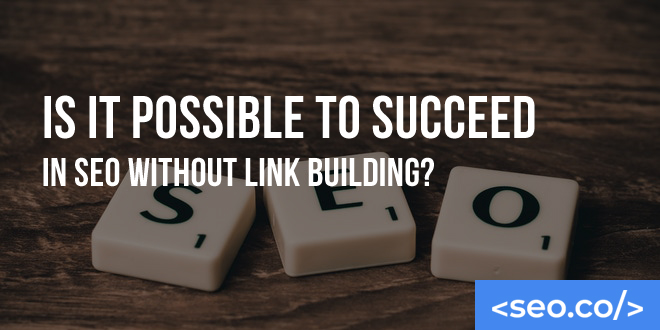
Keyword Targeting: How to Target Specific Keywords in SEO
Of course, you want to improve your rankings for a specific, target keyword. While some aspects of SEO, including link building and quality content creation take time and effort (which has a huge cost), the following three tips are quick, easy and can yield results VERY quickly. 1. Internal Links Internal link building is perhaps one of best ways to boost and target for specific keywords and the good news is that it is immediately in your control. Don’t be afraid to target specific words or phrases with your internal links. 2. Title, Meta & H1 If your web pages aren’t performing for the keywords you want, try A-B testing tweaks on your titles, meta descriptions and H1 headers to include direct targeting of your keywords. We have seen as much as 80% traffic improvement from this alone. 3. Backlinks From External Sources While less in your control than some of the other sources above, you can still engage in white hat link building services or perform link building outreach on your own to target publishers that are relevant to your niche and who have sufficient domain authority to move the needle. Keep in mind: the highest-volume/value keywords with commercial intent may take years to rank for. And, you may never rank for the short-tail due to incumbent competitors. That said, there are many strategies that can still garner you revenue and leads! All is not lost. But, What Keywords Should You Target? Ultimately, you’ll want to narrow down your target keyword list list to the top potential candidates, zeroing in on a dozen or two strong keywords with the highest potential return. You’ll want to look at three factors here: Relevance. Realistically, how close is this keyword to your client’s products, services, and target niche? This is going to be a subjective question, but you can ask more critical questions here; for example, how far along in the buying cycle would a customer be if they were searching for this? How informed is a customer who is searching for this? Who wouldn’t be searching for this? Volume. The volume is another important factor, as it controls how many people could ultimately be influenced by a high-ranking site for this query. However, there’s one limiting factor that could compromise volume’s effectiveness, and that’s competition. Competition. A keyword with a lot of competition will be nearly impossible to rank for. On the other hand, lower competition keywords tend to carry lower volume. You’ll have to find a balance if you want your strategy to work. Now, let’s consider a few other factors when it comes to targeting specific keywords in SEO. Keyword Density You’ll want to include keywords in your blog posts, and meta data, and really, throughout your site. But thanks to various Google updates, if you include too many, you’ll end up getting your client’s site penalized. What’s the solution? The old method was one of percentage, making sure your targeted keyword phrases don’t appear more than 2-3 percent of the time. However, a better solution is to avoid stuffing keywords at all; the less you think about it, the more naturally you’ll write, and the less you’ll have to worry about a penalty. For starters, only choose keywords that you can work into your content naturally, and then, work them into content titles only when they’re appropriate. From there, they’ll probably appear naturally as you complete the content work. For some keywords, this is easier said than done, but your first job is choosing the right keywords to begin with. Your keyword density should mirror the purpose of the miniskirt: Long-tail Keywords vs. Head Keywords First, you need to know the difference between basic keywords (sometimes called head keywords) and long-tail keywords. These are long phrases, sometimes colloquial, like “where’s the best place for chicken tacos” instead of the basic “chicken tacos.” Generally, the longer the query becomes, the lower the volume and competition become. This makes them easier to rank for but also makes them yield a lower potential traffic rate with a high rank. Compared to head keywords, they offer fast-paced gains, but a lower long-term payoff (assuming you invest sufficiently in the basic keywords). They’re also great material for topic-based optimization. The biggest risk between the short and the long tail in keyword targeting is keyword cannibalization. Why Too Many Keywords is Killing Your SEO Strategy In many ways, “more is better” is an ideology that dominates the SEO world. If you have more high-quality links pointing to your domain, you’ll have a higher authority. If you have more content on your site, you get more attention. In most cases, if you invest more time and money into a strategy, you’re going to see better results. Applying this thinking to the realm of keywords, many businesses select a broad range of subjects and key phrases on which to focus their campaign. However, the “more is better” philosophy can actually be counterproductive when applied in this context; in the majority of cases, focusing on fewer topic keywords is going to yield the best results. There are many factors responsible for this dynamic. Worse still is that AI is changing how SEO works. How Keywords Have Evolved Over Time Today, Google operates under an entirely different algorithm. It uses a process known as “semantic search,” which analyzes the intent behind a search query, then tries to find the most relevant answers for that query. Because of this, being relevant is no longer a matter of direct keyword frequency—for example, to rank in search engines for “cheap sleeping bags,” you no longer need to focus on “cheap sleeping bags” specifically. Instead, you must focus on topics for your content—for example, “sleeping bags” could be a broad topic keyword, and you could use that keyword to generate articles like “The best sleeping bags for camping” or “10 qualities every sleeping bag needs.” Your keyword choice doesn’t have to match on a one-to-one basis; instead you can focus on







